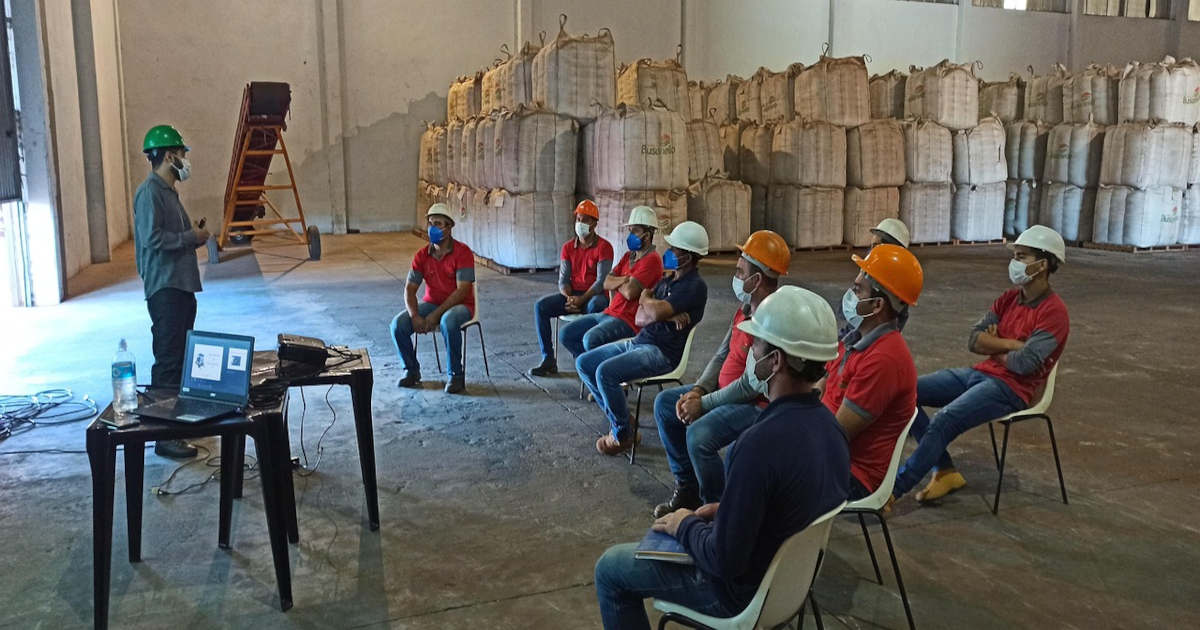Based on inflation, the US Department of Labour announced a 2.6% increase in civil penalties for the Occupational Safety and Health Administration (OSHA) on January 15th.
The maximum penalty for each serious and other-than-serious violation increased to $16,550 compared to $16,131 last year. The maximum penalty for willful or repeated violations will increase from $161,323 to $165,514 per violation.
The annual increase of 2.6% from 2024 to 2025 is a slight decrease from the 2023 to 2024 increase of 3.2%.
Construction site injuries are most commonly caused by falls. This is in line with OSHA's most-cited violations on job sites.
For more information visit OSHA's Violations Penalties page and read the final rule.
Top OSHA violations for fiscal year 2024 (with standard cited):
Below are the top 10 OSHA violations for 2024. This section will also provide links to products to help comply with the rules. 
1. Fall Protection - General Requirements: 6,307 Violations
Standard 1926.501 requires employers to provide fall protection systems for their employees. Employers must guard every floor where a worker can accidentally walk over and provide guardrails and toeboards to prevent falls. They must also provide other types of fall protection, including safety harnesses and lines, safety nets, stair railings, and handrails. To avoid this violation, shop for our roof safety essentials.2. Hazard Communication: 2,888 Violations
Standard 1910.1200& requires that hazards of all chemicals produced or imported are classified, and that information concerning the classified hazards is transmitted to employers and employees. The requirements of this section are intended to be consistent with the provisions of the United Nations Globally Harmonized System of Classification and Labeling of Chemicals (GHS).3. Ladders: 2,573 Violations
Standard 1926.1053 has a variety of provisions designed to prevent ladder-related injuries. Portable ladders that are self-supporting and not self-supporting must be capable of supporting four times the maximum intended load except that each extra-heavy-duty type 1A metal or plastic ladder shall sustain at least 3.3 times the maximum intended load. A fixed ladder must be able to support at least two loads of 250 pounds. Each step or rung shall be capable of supporting a single concentrated load of at least 250 pounds. Check out the OSHA for more. Shop our selection of ladders to stay in compliance.4. Respiratory Protection: 2,470 Violations
Standard 1910.134 requires employers to provide Personal Protective Equipment such as masks or respirators to protect themselves from breathing in air contaminants with harmful dust, fogs, fumes, mists, gases, smoke, sprays, or vapors. Click the link for different types of respiratory protection mentioned.5. Lockout/Tagout: 2,443 Violations
Standard 1910.147 mandates the adoption and implementation of procedures to shut down equipment, isolate it from its energy sources, and prevent the release of potentially hazardous energy during maintenance and servicing activities. It outlines minimum performance standards and specific criteria for creating an effective program to control hazardous energy. However, employers are allowed flexibility in designing Lockout/Tagout programs appropriate for their facilities.6. Powered Industrial Trucks: 2,248 Violations
Standard 1910.178 provides the safety requirements for using powered industrial trucks in the workplace. Trucks such as these are crucial to the lifting, moving, and handling of materials. They can pose serious risks if not operated correctly. It specifies how these vehicles should be designed, maintained, and operated to prevent injuries and fatalities related to their use.7. Fall Protection - Training Requirements: 2,050 Violations
Standard 1926.503 requires employers to provide sufficient training regarding fall protection. It ensures that employees are properly trained to recognize and avoid fall hazards. Click the link for different types of training required. 8. Scaffolding: 1,873 Violations
Standard 1926.451 provides safety regulations for scaffolding. It offers guidelines for the design, construction, and use of scaffolds along with the training and qualifications of workers who work on or around scaffolds.9. Personal Protective and Lifesaving Equipment - Eye and Face Protection: 1,814 Violations
Standard 1926.102 dictates the requirements for safeguarding workers from eye and face injuries in construction environments. The employer must provide its employees with the correct eye or face protection for the appropriate hazard that could cause injury. Protect your workers' eyes with our safety glasses.
10. Machine Guarding: 1,541 Violations
Standard 1910.212 requires employers to provide proper guards for machinery with moving parts that could cause injury. It specifies that guards, such as physical barriers or safety devices, must protect workers from hazards, especially at the point of operation. It also requires workers to be trained on safety and regular inspections.
Conclusion
Employee safety and well-being should always be a top priority in the workplace. Employers must ensure their employees have the necessary training, equipment, and support to do their jobs safely. Providing safety gear, equipment, and tools is fundamental for creating a safe workplace.
These are the top 10 OSHA violations from last year, to protect yourself and your team from injury, shop, our safety supplies and equipment and protective clothing.